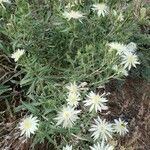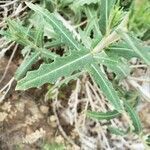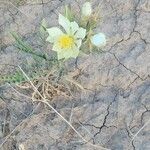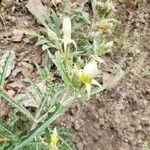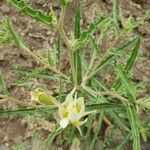Plants biennial, candelabra-form. Stems solitary, erect, straight; branches distal, distal longest, antrorse, upcurved; hairy. Leaves: blade 35.9–125(–146) × 2.2–26.2 mm, widest intersinus distance 2.1–11.9(–14) mm, always on some leaves 4+ mm; proximal oblanceolate, lanceolate, or elliptic, margins pinnate, lobes 14–30, slightly antrorse or perpendicular to leaf axis, 1.5–4.6(–8.9) mm; distal lanceolate, base not clasping, margins pinnate, lobes 10–26, slightly antrorse or perpendicular to leaf axis, 1.3–9.5 mm; abaxial surface with simple grappling-hook, complex grappling-hook, and generally needlelike trichomes, adaxial surface with simple grappling-hook or needlelike trichomes. Bracts: margins entire or toothed to pinnate. Flowers: petals light to golden yellow, (11.4–)13.8–24.4(–26.9) × 4–7.5 mm, apex rounded, glabrous abaxially; stamens light to golden yellow, 5 outermost petaloid, filaments narrowly spatulate, slightly clawed, (10.6–)12–21.7 × 2.1–5.1 mm, without anthers, second whorl with anthers; anthers straight after dehiscence, epidermis smooth; styles 7.7–15.8 mm. Capsules cylindric, 11.2–24.7 × 5.6–8.7 mm, base tapering to rounded, not longitudinally ridged. Seeds: coat anticlinal cell walls sinuous, papillae 34–48 per cell. 2n = 18.
More
An annual herb. It grows 60-75 cm tall. It has many branches. The stems are shiny and white. The leaves are rough and sticky and covered with hairs. These have small hooks. The flowers are 5 cm across. They open in the late afternoon and close in the morning. They have 10 yellow petals. There are many long stamens.
